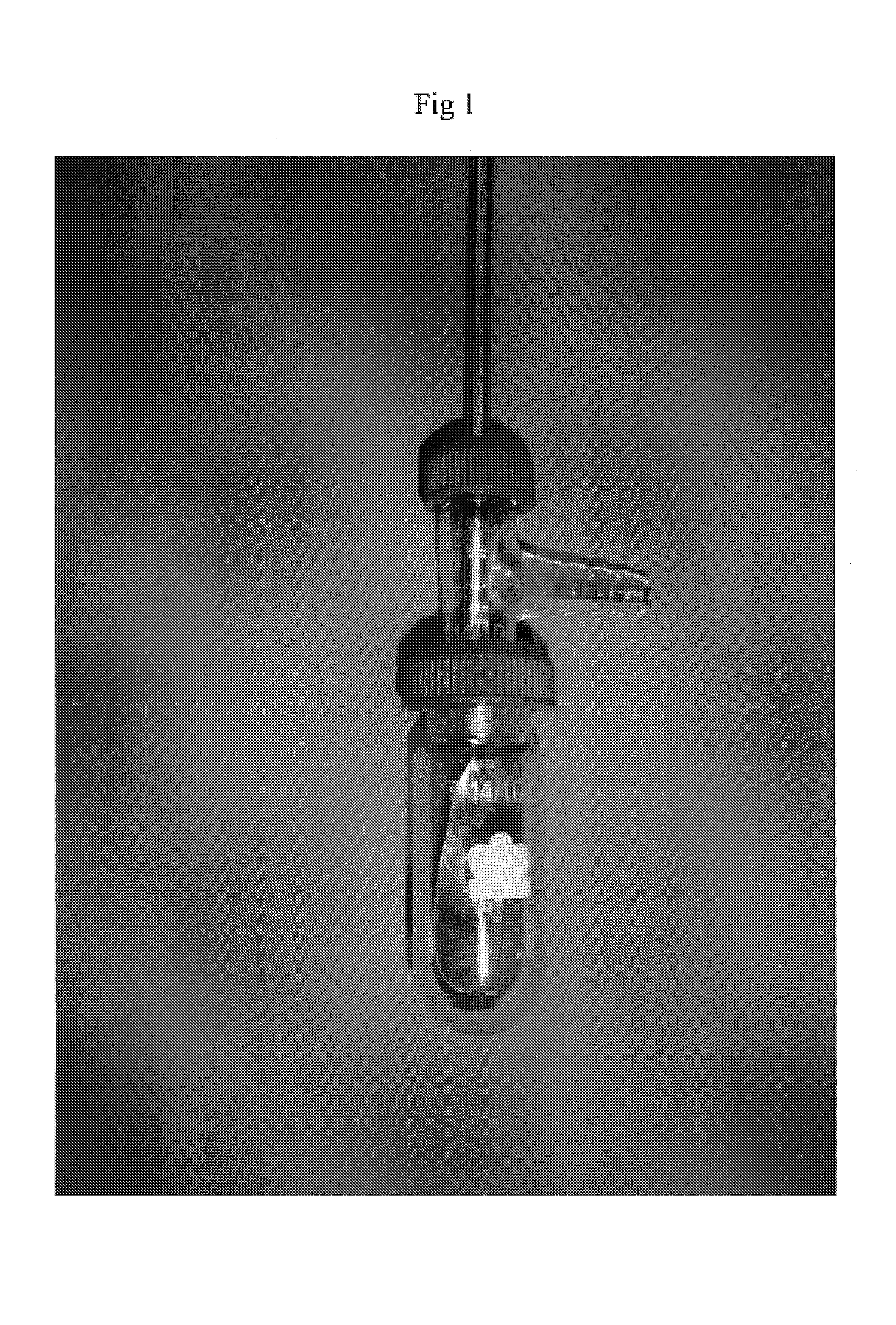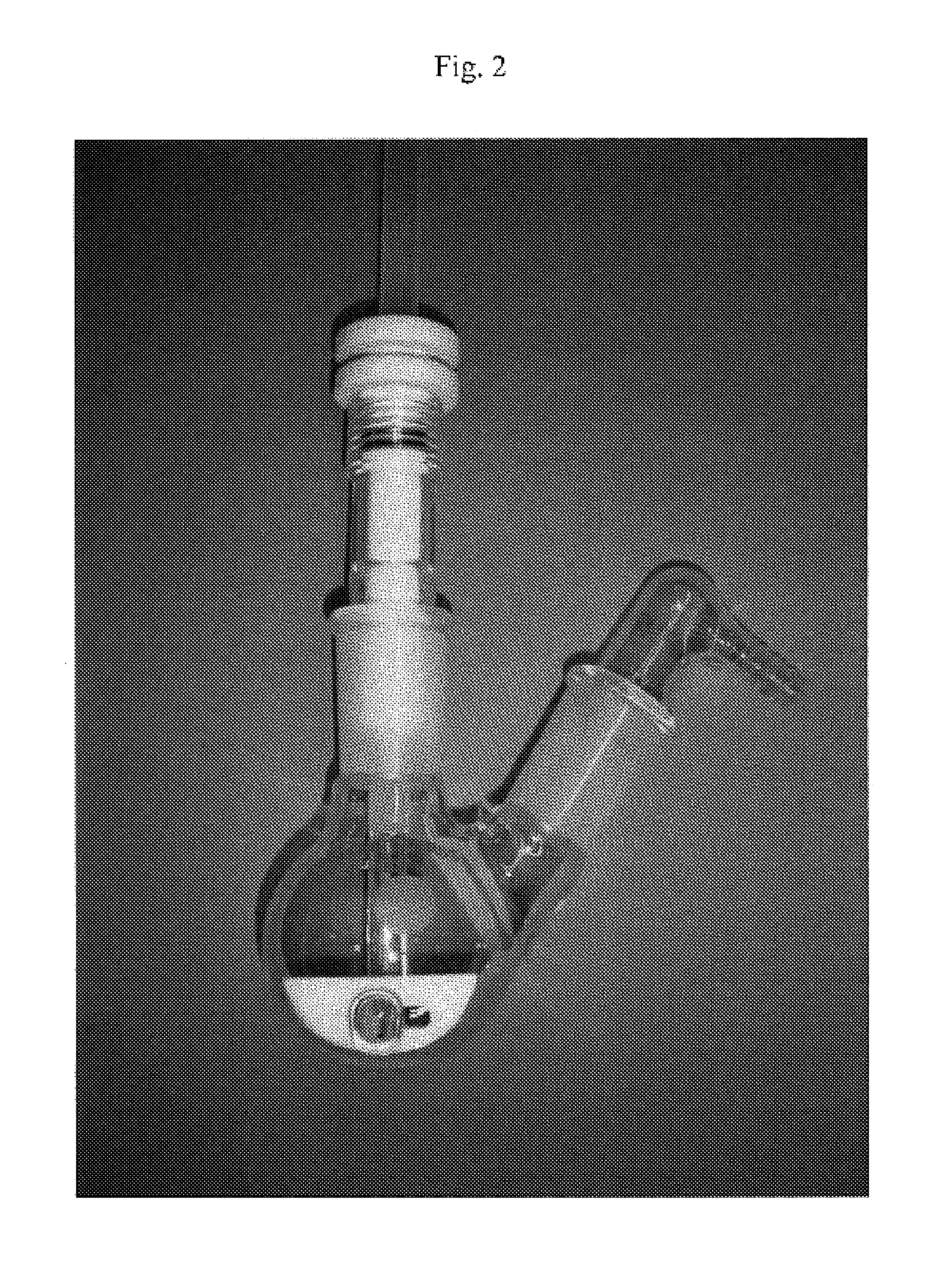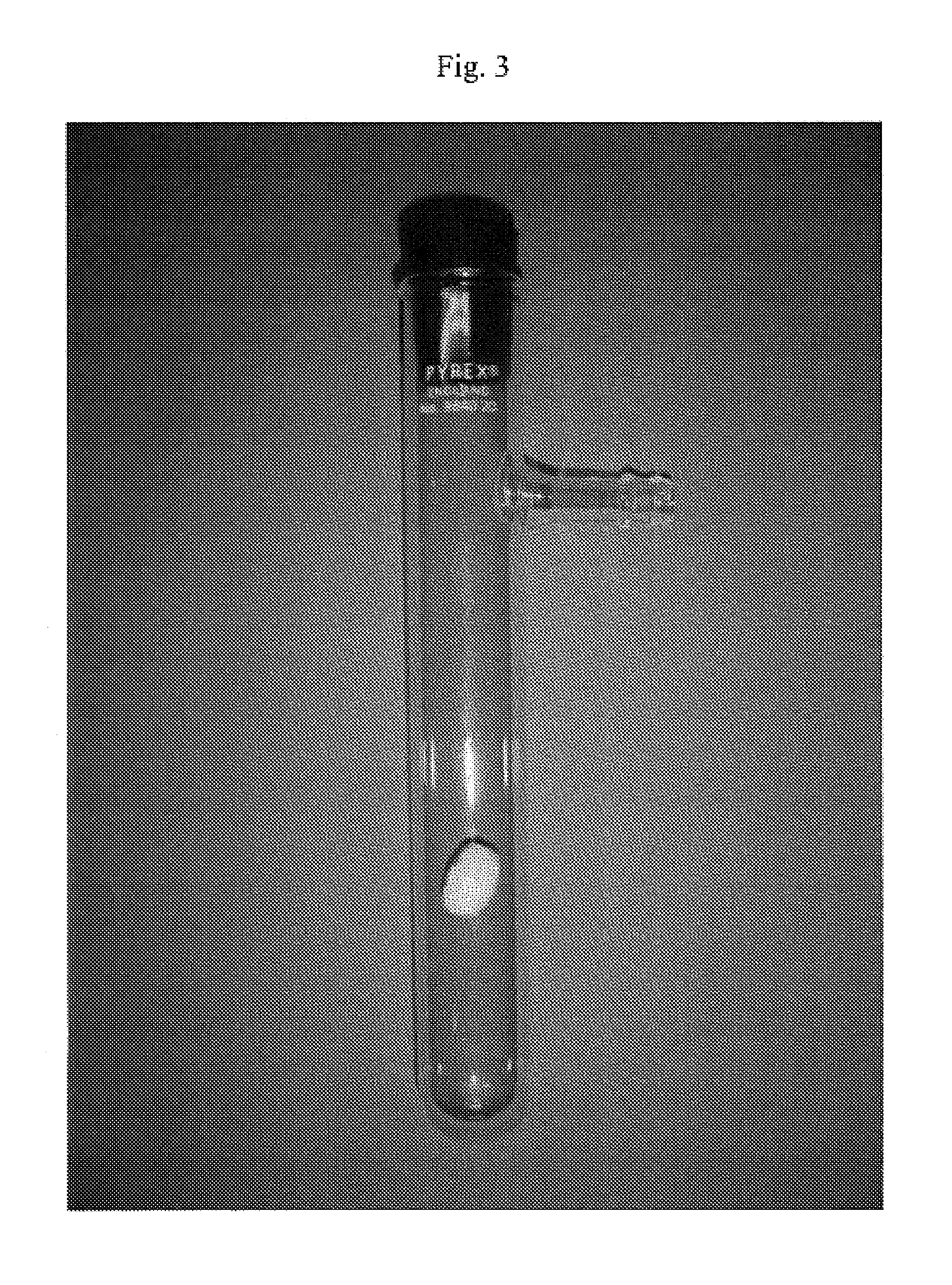Synthesis of polyanhydrides
a technology of polyanhydride and polyanhydride, which is applied in the preparation of carboxylic acid amides, organic chemistry, chemistry apparatus and processes, etc., can solve problems such as difficult processing, and achieve the effects of reducing the yield of prepolymers, fewer steps, and higher yield
- Summary
- Abstract
- Description
- Claims
- Application Information
AI Technical Summary
Benefits of technology
Problems solved by technology
Method used
Image
Examples
example 1
1,10-Bis-salicylic-sebacate
[0127]Salicylic acid (1.2 g, 8.4 mmol) was dissolved in THF (3.0 ml) containing pyridine (9.0 ml). Sebacoyl chloride (1.0 g, 4.2 mmol) was added dropwise via syringe over 5 minutes with stirring in an ice bath (˜0° C.). The reaction was allowed to come to room temperature, stirred for 2 hours, then poured over an ice / water slush (150 ml). After acidifying to pH˜2 with concentrated HCl, the product was isolated by vacuum filtration, purified by washing with water (3×50 ml), and air-dried. Yield: 91% (white powder).
[0128]1H-NMR (CDCl3): δ 8.13 (d, 2H, ArH), 7.61 (t, 2H, ArH), 7.35 (t, 2H, ArH), 7.12 (d, 2H, ArH), 2.63 (t, 4H, CH2), 1.82 (m, 4H, CH2), 1.48 (b, 8H, CH2). IR (NaCl, cm−1): 3400-2700 (COOH), 1760 (C═O, ester), 1700 (C═O, ester). Anal. Calcd: C, 65.18; H, 5.88. Found: C, 64.50; H, 5.73. Tm=128-131° C.
example 2
1,10-Bis-4-acetamidosalicyl-sebacate
[0129]4-Acetamidosalicylic acid (2.2 g, 11 mmol) was dissolved in ice-cold N,N-dimethylformamide (DMF) (50 ml) containing pyridine (20 ml). Sebacoyl chloride (0.90 g, 3.8 mmol) in DMF (1.0 ml) was added dropwise via syringe over 5 minutes with stirring. The reaction was maintained at ˜0° C. by an ice bath. After 6 hours, the mixture was poured over an ice / water slush (200 ml) and acidified to pH˜2 with concentrated HCl. The precipitated product was isolated by vacuum filtration, washed with water (2×50 ml), and air-dried. Yield: 98% (white powder).
[0130]1H-NMR (DMSO-d6): δ 10.22 (s, 2H, ArNH), 7.82 (d, 2H, ArH), 7.50 (s, 2H, ArH), 7.38 (d, 2H, ArH), 2.40 (t, 4H, CH2), 2.02 (s, 6H, CH3), 1.60 (m, 4H, CH2), 1.30 (b, 8H, CH2). IR (NaCl, cm−1): 3400-2750 (COOH), 3340 (N—H), 1765 (C═O, ester), 1700 (C═O, ester), 1680 (C═O, amide I), 1620 (NH, amide II). Anal. Calcd: C, 60.43; H, 5.76; N, 5.04. Found: C, 59.56; H, 5.76; N, 4.81. Tm=184-186° C.
example 3
1,10-Bis-5-acetamidosalicyl-sebacate
[0131]5-Acetamidosalicylic acid (12.2 g, 62.7 mmol) was dissolved in ice-cold THF (500 ml) containing pyridine (17.8 ml, 209 mmol). Sebacoyl chloride (5.00 g, 20.9 mmol) dissolved in THF (7.0 ml) was added dropwise via addition funnel over 10 min. with stirring in an ice bath (˜0° C.). After stirring for 6 hours at ˜0° C., the reaction was poured into an ice / water slush (400 ml) and acidified to pH˜2 with concentrated HCl. The precipitated product was isolated by vacuum filtration. The residue was washed with 30% ethanol (4×100 ml), and air-dried to provide the title product. Yield: 96% (white crystals).
[0132]1H-NMR (DMSO-d6): δ 10.15 (s, 2H, ArNH), 8.15 (s, 2H, ArH), 7.82 (d, 2H, ArH), 7.12 (d, 2H, ArH), 2.58 (t, 4H, CH2), 2.08 (s, 6H, CH3), 1.65 (m, 4H, CH2), 1.38 (b, 8H, CH2). IR (NaCl, cm−1): 3400-2600 (COOH), 3370 (NH), 1710 (C═O, ester), 1700 (C═O, ester), 1650 (C═O, amide I), 1610 (NH, amide II). Anal. Calcd: C, 60.43: H, 5.76; N, 5.04. Fou...
PUM
| Property | Measurement | Unit |
|---|---|---|
| temperature | aaaaa | aaaaa |
| average molecular weight | aaaaa | aaaaa |
| molecular weight | aaaaa | aaaaa |
Abstract
Description
Claims
Application Information
 Login to View More
Login to View More - R&D
- Intellectual Property
- Life Sciences
- Materials
- Tech Scout
- Unparalleled Data Quality
- Higher Quality Content
- 60% Fewer Hallucinations
Browse by: Latest US Patents, China's latest patents, Technical Efficacy Thesaurus, Application Domain, Technology Topic, Popular Technical Reports.
© 2025 PatSnap. All rights reserved.Legal|Privacy policy|Modern Slavery Act Transparency Statement|Sitemap|About US| Contact US: help@patsnap.com



